Table of Contents
SYLLABUS OUTLINE:
|
Syllabus Component |
Teaching hours |
|
|
SL |
HL |
|
|
Geographic themes—seven options SL—two options; HL— three options
|
60 |
90 |
|
SL and HL core Geographic perspectives—global change
|
70 |
70 |
|
HL only Geographic perspectives—global interactions
|
60 |
|
|
Internal assessment SL and HL Fieldwork |
20 |
20 |
|
Total Teaching Hours |
150 |
240 |
Part One: Geographic Themes
Option A: Freshwater
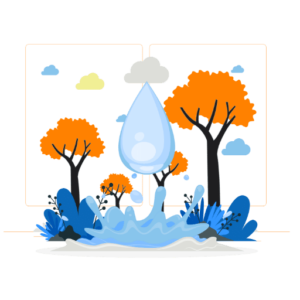
|
1. Drainage Basin and Geormorphology |
Drainage: It is the natural or artificial removal of a surface’s water and subsurface from an area with excess of water. Basin: It is an area drained by a river and all of its tributaries. Hydrological Cycle: It is the scientific study of .the movement, distribution and management of water on Earth and other planets, including the water cycle, water resources and Geomorphology: The study of the physical features of the surface of the earth and their relation to its geological structures. Drainage basin: drainage basin is any area of land where precipitation collects and drains off into a common outlet, such as into a river, bay, or other body of water. Watershed: An area or ridge of land that separates waters flowing to different rivers, basins, or seas. Hydrological cycle: The Hydrologic Cycle (also called the Water Cycle) is the continuous movement of water in the air, on the surface of and below the Earth. River discharge and various physical river processes Inputs: Precipitation: The conversion and transfer of moisture in the atmosphere in all forms like
Outputs: Evaporation: It is a process through which liquid or a solid changes into gaseous form. It is the conversion of the solid or liquid snow, ice, water to water vapor in the atmosphere. Formation of different river landforms Waterfall: A fall of water is an area where water flows over a vertical drop or a series of steep drops in the course of a stream Floodplain: A floodplain is an area of land adjacent to a stream or river which stretches from the banks of its channel to the base of the enclosing valley walls Meanders: A meander is one of a series of regular sinuous curves, bends, loops, turns, or windings in the channel of a river, stream, or other watercourse. |
|
2. Flooding and Flood Mitigation |
Alteration of the risk of floods due to natural and human interaction in various regions and the possible measures to alleviate such risk. HYDROGRAPHS: Storm hydrograph or flood hydrograph shows how a river channel responds to the key process of the hydrological cycle. The influence of geology: Geology helps us understand climate change in the past, which may help us predict future scenarios. Factors affecting flood risk The hydrological impact of urbanization:
Deforestation: Deforestation is when humans remove or clear large areas of forest lands and related ecosystems for non-forest use. Channel modification: It includes channelization, enlargement and straightening. It may create new channels. Flood mitigation: The flood mitigation involves the management and control of flood water movement, such as redirecting flood run-off through the use of floodwalls and flood gates, rather than trying to prevent floods altogether. Dams: structure built across a stream, a river, or an estuary to retain water. Afforestation: Afforestation is the process of planting trees, or sowing seeds, in a barren land devoid of any trees to create a forest. Afforestation helps in reducing flood risk: Afforestation involves the planting of trees in a drainage basin to increase interception and storage while reducing surface runoff. Flood abatement: It involves decreasing the amount of run-off and reducing the flood peak in a drainage basin. Channel modification: It includes:
Planning: It includes having personal insurance for being prepared for flood. Sandbags are used to protect homes, sealing doors and windows, moving the valuables upstairs etc. Attempts at flood prediction and forecasting: Flood forecasting is the use of forecasted precipitation and stream flow data in rainfall-runoff and stream flow routing models to forecast flow rates and water levels for periods ranging from a few hours to days ahead, depending on the size of the watershed or river basin. Ways to improve flood warning:
|
|
3. Water Scarcity and Water Quality |
Physical and economic water scarcity, Water quality Physical water scarcity and economic water scarcity: The level of water scarcity in any nation depends upon certain factors like:
Physical water scarcity: It is the condition where the consumption of water exceeds 60% of useable supply. Economic water scarcity: It is a condition where a nation has sufficient amount of water to meet the needs but it requires more storage and transport facilities. Drought: Drought is characterized by a lack of precipitation—such as rain, snow, or sleet—for a protracted period of time, resulting in a water shortage. Water quantity and water quality: Water quantity depends on factors like:
Drought, water stress, water use
Eutrophication, causes and solutions Environmental consequences of agricultural activities on water quality The Potential Effects of Irrigation: The Environmental impacts of irrigation relate to the changes in quantity and quality of soil and water as a result of irrigation and the effects on natural and social conditions in river basins and downstream of an irrigation scheme. Salinization, growing human pressures on rivers, lakes and aquifers including economic growth and population migration. Salinization: Salinization is the increase of salt concentration in soil and is, in most cases, caused by dissolved salts in the water supply. Why is salinization a problem? Salinization of farmland is a fast-growing problem worldwide. Where does salinization occur? Salinization is a global problem. It tends to be concentrated in the world’s arid and semi-arid regions. The map shows the distribution of saline, sodic and saline-sodic soils all over the globe. Growing human pressures on rivers, lakes and aquifers including economic growth and population migration: Population growth usually increases demand for water in all sectors of the economy, agricultural, industrial, and domestic The Grand Ethiopian Renaissance Dam (Case Study) Water diversion in China (Case Study) |
|
4. Water Management Futures |
Dam: multi-purpose scheme, The Aswan Dam Costs and benefits of a dam as a multi-purpose water scheme The impacts of the Aswan Dam (a mega dam) on the River Nile Numerous costs of the Aswan High Dam Integrated River Basin Management (IRBM), American Watershed Initiative (AWI) Integrated drainage basin management: Integrated River Basin Management (IRBM) emphasises cross-disciplinary coordination of water, land and related resources in a river basin, watershed or catchment to achieve long-term sustainability. America’s Great Watershed Initiative (AGWI): It is a project to increase water availability, improve its quality and safeguard its use for future generations. Wetland,The Ramsar Convention Wetlands: A wetland is a place where the land is covered by water, either salt, fresh or somewhere in between. The Ramsar Convention: The Convention on Wetlands of International Importance holds the unique distinction of being the first modern treaty between nations aimed at conserving natural resources. Community responses on water management Water Saving: Saving water is becoming an increasing concern for not only farmers, but for everyone around the world. Customer pricing: Water pricing is a means of exercising a public policy about water. New technologies:
Zoning: All communities must guide development so that public water supply is protected and replenished. Water Purification: Water purification is the process of removing undesirable chemicals, biological contaminants, suspended solids, and gases from water. Rainwater Harvesting:Rainwater harvesting (RWH) is a simple method by which rainfall is collected for future usage. |
Option B: Oceans and Coastal Margins
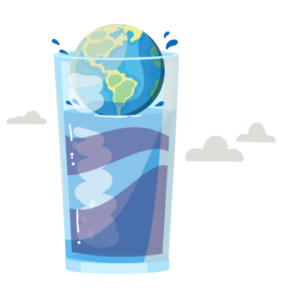
|
1. Ocean — Atmosphere Interactions |
The operation of ocean currents, including their distribution, nutrient and energy transfers and the importance of oceanic conveyor belts Atmosphere–oceanic interactions associated with El Niño–Southern Oscillation (ENSO) and La Niña cycles and their climatic, environmental and economic effects
The formation, distribution and physical impacts of hurricanes on coastal margins,including storm surges
The changing role of oceans as a store and source of carbon dioxide (CO2) and the impacts of ocean acidification on coral reefs |
|
2. Managing Coastal Margins |
Coastal erosion and Flooding management strategies Cliff failure: Cliffs collapse for a number of reasons, including the rate and type of weathering acting upon the front edge of the cliff. Cost-benefit analysis of coastal defense: The coastal areas are affected by many hazards The Soufrière Marine Management Area (SMMA) The Soufriere Marine Management Area, or SMMA for short, is an example of how a fragile coastal environment can be managed. Sovereignty rights of nations- Exclusive economic zone (EEZ) Exclusive economic zone (EEZ): The Exclusive Economic Zone (EEZ) comprises an area which extends either from the coast, or in federal systems from the seaward boundaries of the constituent states. Managing coral reefs and mangrove swamps Mangrove swamps: Mangrove swamps are coastal wetlands found in tropical and subtropical regions. Case study -Protecting the Palisadoes spit Case study -The Thames Barrier |
|
3. Ocean Management Futures |
Ocean Management Futures How Earth’s atmospheric and oceanic systems are connected by physical processes Developing abiotic resources: Abiotic resources are resources that are non-living. Deep-water discoveries Hydrates: Hydrates are compounds that usually consist of methane molecules trapped in a cage of water. Oil: Exploration of oil and gas deposits is now a global industrial activity in the deep ocean. The Environmental, Economic and Geopolitical Consequences of Overfishing: World fisheries: According to the Food and Agriculture Organization (FAO), the world production in 2005 consisted of 93.2 million tonnes captured by commercial fishing in wild fisheries, plus 48.1 million tonnes produced by fish farms. Fish stock: The term fish stock usually refers to a particular fish population that is more or less isolated from other stocks of the same species. The decline of fish stocks: Increased human demand for fish and subsidies for fishing fleets have resulted in too many boats chasing too few fish. Initiatives to manage oceanic pollution: Ways to reduce pollution in the ocean. Case study The Arctic The Arctic Ocean is located in the Northern Hemisphere and mostly in the Arctic North Polar Region. |

Option C: Extreme Environments

|
1. Characteristics of Extreme Environments |
Why some locations are seen as having extreme weather. |
|
2. Physical Processes and Landscapes |
How physical processes in harsh regions produce distinctive landscapes |
|
3. Managing Extreme |
The capacity of many stakeholders to get economic benefit from severe settings. |
| 4. Environments | Desertification, its origins, exacerbating factors, outcomes, and control measures, encompassing land utilization, conflicts, and global warming are discussed in this chapter. |
|
5. Extreme Environments Features |
Future prospects for maintaining communities in severe areas |
Option D: Geophysical Hazards
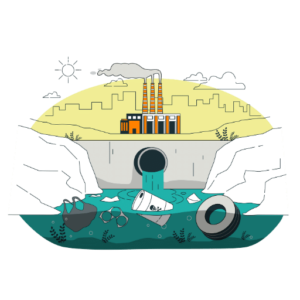
|
1. Geophysical Systems |
How different types and magnitudes of geophysical occurrences are caused by geological processes |
|
2. Geophysical Hazard Risks |
How geophysical systems provide hazard threats in various locations |
|
3. Hazard Risk and Vulnerability |
Geophysical risks and it’s differing ability to have an impact on humans in various local circumstances |
|
4. Future Resilience and Adaptation |
Possibilities for reducing human exposure to geophysical risks in the future |
Option E: Leisure, Tourism and Sport

|
1. Changing Leisure Patterns |
Examples in depth to show how involvement has changed recently for two or more cultures at various stages of development factors such as wealth, gender, stage in life, personality, and area of residence that might impact an individual’s engagement in sports and tourism. |
|
2. Tourism and Sport at the Local and National Scale |
One major sports league case study Study of one rural festival’s site considerations and geographical effects |
|
3. Tourism and Sport at the International Scale |
Case study of expenses and capital gains for one nation hosting a global event |
|
4. Managing Tourism and Sport for the Future |
Future prospects for tourism and sport management and involvement at various scales |
Option F: Food and Health

|
1. Measuring Food and Health |
Global trends in nutrition and health indicators to assess food and health inequities throughout the world The epidemiological shift and the consequences of an aging global population on disease burden |
|
2. Food Systems and the Spread of Disease |
Benefits of a systemic approach to food production and the significance of the spread agricultural innovation Geographic variables influencing to the incidence and spread of vector-borne and water-borne diseases |
|
3. Stakeholders in Food and Health |
Role of different stakeholders in defining food and health habits Factors affecting the severity of famine include government, media influence, and access to international relief |
|
4. Future Health and Food Security and Sustainability |
Prospective solutions to food insecurity including merits and demerits of various food production techniques Management of diseases and pandemics for improved health |
Option G: Urban Environments
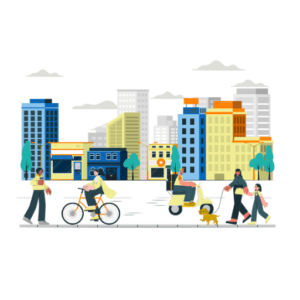
|
1. The Variety of Urban Environments |
The features, distribution, and economic activity of urban areas |
|
2. Changing Urban Systems |
How economic and demographic factors alter urban structures throughout time Case study of infrastructure development in one city across time |
|
3. Urban Environmental and Social Stresses |
The experience of, and management of, urban stressors and the varied power of various parties Case study of how individuals are affected differently by air pollution in one city Study of a single impacted city’s situation and management reaction Examples of two impacted neighborhoods and their people in detail and the comparison between them |
|
4. Building Sustainable Urban Systems for the Future |
Future prospects for managing urban systems sustainably
|
Part Two: Geographic Perspectives – Global Change
Unit 1: Changing Population
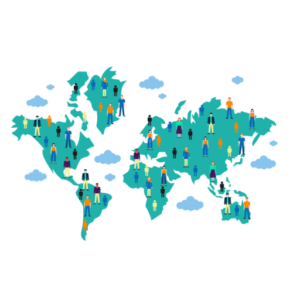
|
1. Population and Economic Development Patterns |
At the global level, both natural and human causes influence population dispersion. World economy progress trends and classification: Low-income nations, middle-income nations, and developing economies, as well as high-income nations |
|
2. Changing Populations and Places |
Population change processes and how they affect individuals and areas. Detailed examples of two or more contrasting countries. One case study of a modern megacity that is expanding quickly Examples of two or more forced moves in detail, together with the political and environmental forces that drove them and their effects on people and places |
|
3. Challenges and Opportunities |
Policies for regulating population transition, with an emphasis on policies for aging societies; pro- or anti- natalist policies; policies for gender equality and anti-trafficking laws. |
Unit 2: Global Climate – Vulnerability and Resilience
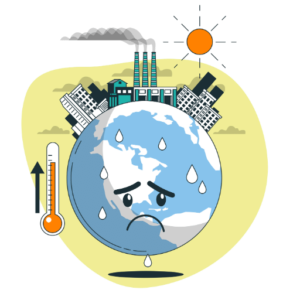
|
1. Causes of Global Climate Change |
Fluctuations in solar radiation such as global darkening brought on by volcanic eruptions; changes and feedback loops in terrestrial albedo, Feedback loops and methane gas emissions. |
|
2. Consequences of Global Climate Change |
Changes in the hydrosphere, atmosphere, and biosphere due to climate change include: water stored in ice and oceans, rising sea levels; carbon stored in ice, oceans, and the biosphere; the frequency and severity of extreme weather events, such as drought; geographic changes in biomes, habitats, and animal migration patterns; and adjustments to agriculture, such as crop yields, cultivation’s potential, and soil erosion. |
|
3. Responding to Global Climate Change |
Government-led programmes for addressing global warming include international geopolitical initiatives, taking into account the possibility that the nations most affected by emissions of greenhouse gases are geographically remote from the origin of such emissions; |
Unit 3: Global Resource Consumption and Security

|
1. Global Trends in Consumption |
An overview of worldwide patterns and trends in the availability and use of the following resources: water, including embedded water in food and manufactured goods; land/food, including changing diets in middle-income nations; energy, including the relative and increasing significance of hydrocarbons, nuclear power, renewable energy sources, and new sources of modern energy |
|
2. Impacts of Changing Trends in Resource Consumption |
How resource pressure may affect future place security |
|
3. Resource Stewardship |
Possibilities for resource management that is sustainable and control over decision-making |
Part Three: Geographic Perspectives – Global Interactions
Unit 4: Power, Places and Networks
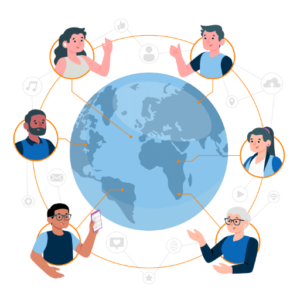
|
1. Global Interactions and Global Power |
Markers of globalization demonstrating ways nations engage through cross-border exchanges Global superpowers and their effect on the economy, the world’s politics, and culture |
|
2. Global Network and Flows |
A description of current global networks and flows:
|
|
3. Human and Physical Influences on Global Interactions |
How physical, technological, and political developments affect international relations |
Unit 5: Human Development and Diversity
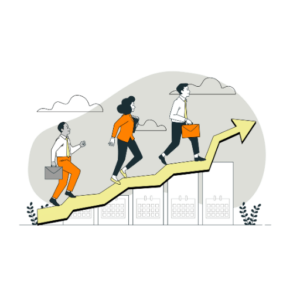
|
1. Development Opportunities |
Methods for assisting human growth processes. |
|
2. Changing Identities and Cultures |
How cultural influences and changes are brought about locally and globally |
|
3. Local Responses to Global Interaction |
the differing ability among regional settings as well as individuals to thwart or embrace change. |
Unit 6: Global Risks and Resilience
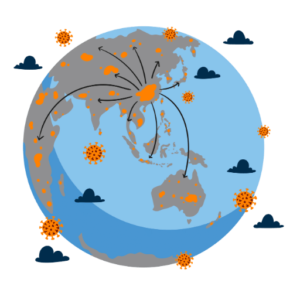
|
1. Geopolitical and Economic Risks |
How technology and globalising trends put people and communities at risk from new geopolitical and economic dangers |
|
2. Environmental Risks |
Various scales of global flows’ effects on the environment:
Environmental concerns related to the global industrial shift:
|
|
3. Local and Global Resilience |
Reshoring of economic activity by TNCs; use of crowd-sourcing technologies by government and civil society to develop resilience; new technology for the administration of cross-border data and person movements, including cybersecurity and e-passports. |







